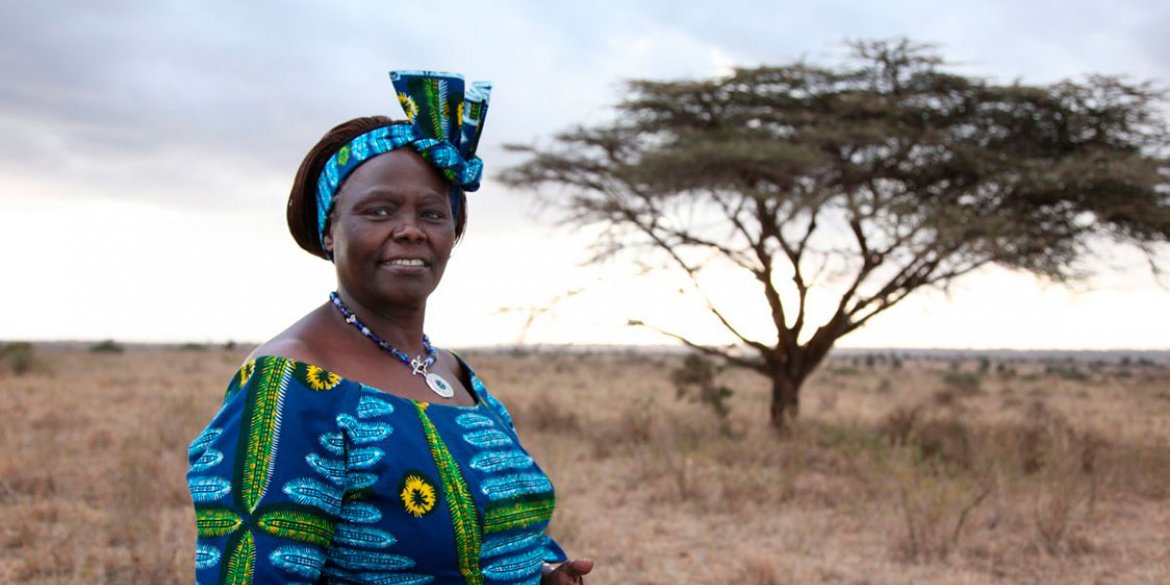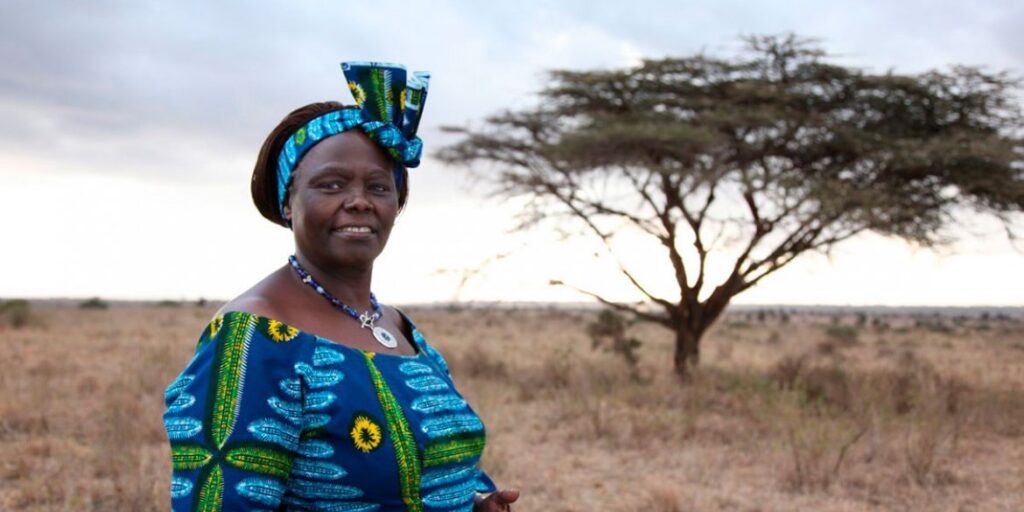
Women and Conservation in Kenya : Where are the women?

We cannot tire or give up. We owe it to the present and future generations of all species to rise up and walk. These are the words of the late Nobel Peace Prize Laureate, Professor Wangari Maathai, a pioneer of environmental justice in Kenya. Environmental justice is the linkage between environmental protection and human rights, a movement that focuses on addressing the systemic inequality on the benefits and costs of development and conservation. The Late Maathai was in the late 70s and 80s, one of the few African voices in the conservation space in Kenya- advocating for citizens’ participation in conserving the environment, planting a green belt of trees to combat desertification, protecting community green spaces for the relaxation of the ordinary mwananchi, and most importantly, participation in decision making to drive this change.
Kenya, as most know, is a popular safari destination in Africa given its vast expanses of savannah and diverse wildlife, including the Big 5 – a top foreign exchange earner for the government that brings in around 2 million international clientele annually. However, while part of this conservation entails conserving wildlife which is the backbone of Kenya’s tourism, it has come at the cost of some local communities, who have been fenced off their lands and pastoralist livelihoods to house wildlife conservancies. Unfortunately, some of these practices are accompanied with reports of human rights violations notwithstanding the fact that they are also excluded from the benefits and proceeds from conservancy safari tourism. A conservancy is land designated by a private landowner, groups of owners, a community or corporate body to conserve wildlife and similar land uses.
Kenya’s conservancies cover over 6 million hectares of land, almost 11% of the country’s land mass, and directly represent about 700,000 households, spread over 28 counties in Kenya. They house almost 65% of Kenya’s wildlife and are a rich economic opportunity for many communities, given that about half of these conservancies constitute community lands. Communities have been custodians of wildlife in their lands long before private and group ranches joined the arena. And policy and legislation recognizes and supports this. The Constitution of Kenya, 2010 and the Community Land Act, 2016 both recognize community land as a form of land holding. In addition, the Wildlife (Conservation and Management) Act 2013, recognizes wildlife conservancies as a land-use.
In these communities, women constitute the largest users of natural resources. Being the largest users, they stand to lose the most when community land title registrations are delayed with only about 11 titles processed so far. They also stand to lose when the environment is damaged, through clashes between communities or between private landowners and communities. Conservancies are land based, and in Kenya where land inheritance and ownership in communities is largely male governed, women are excluded from participating in decisions and enjoying benefits and proceeds from a land use that they support. Women currently constitute less than 10% of conservancy owners and 5% of managers.
The Kenyan Parliament’s refusal to enact the Constitution of Kenya (Amendment) Bill 2018, also known as the Gender Bill, to implement the constitutional requirement that neither gender should have more than two-thirds in elective or appointive bodies, extend beyond the struggle for gender equality in elections and public appointments, it also reinforces gender norms and diminish the important roles women play in other spaces, including environment and conservation.
On this International Women’s Day, as we recognize and celebrate many remarkable women amongst us who have taken those less travelled roads in conservation like the late Prof Maathai, it is imperative that both national and county governments take the lead in recognizing and promoting through policy, not just women’s roles in conservation but women’s rights in benefiting from economic opportunities in conservation, and in decision making- to promote peace in this sector, advance conservation goals, and ultimately protect the flora and fauna of Kenya.
If you wish to learn more about women and conservation in Kenya, please reach out to me at halima@hawahussein.com
Photo credit: https://urnabios.com/the-queen-of-trees-wangari-maathai-risked-her-life-for-reforestation/
#conservation #conservancies #environmentaljustice #communityconservancies #privateconservancies #safaritourism #womeninconservation #genderbill #twothirdsgenderrule #internationalwomensday #iwd2022 #iwd #leadership #breakthebias #culture #kenya
We cannot tire or give up. We owe it to the present and future generations of all species to rise up and walk. These are the words of the late Nobel Peace Prize Laureate, Professor Wangari Maathai, a pioneer of environmental justice in Kenya. Environmental justice is the linkage between environmental protection and human rights,…